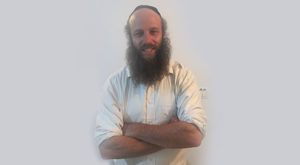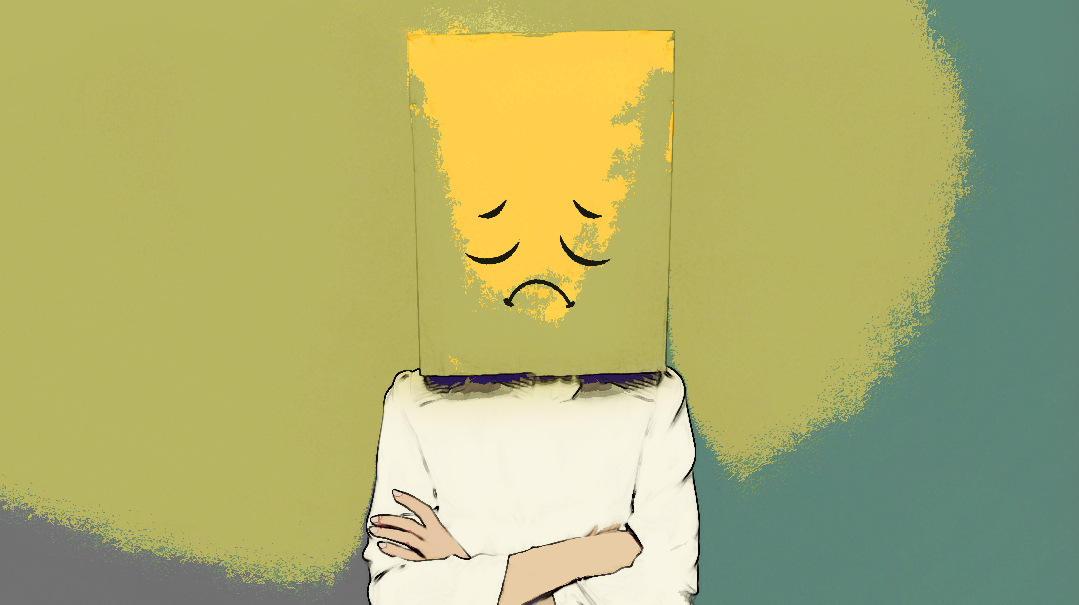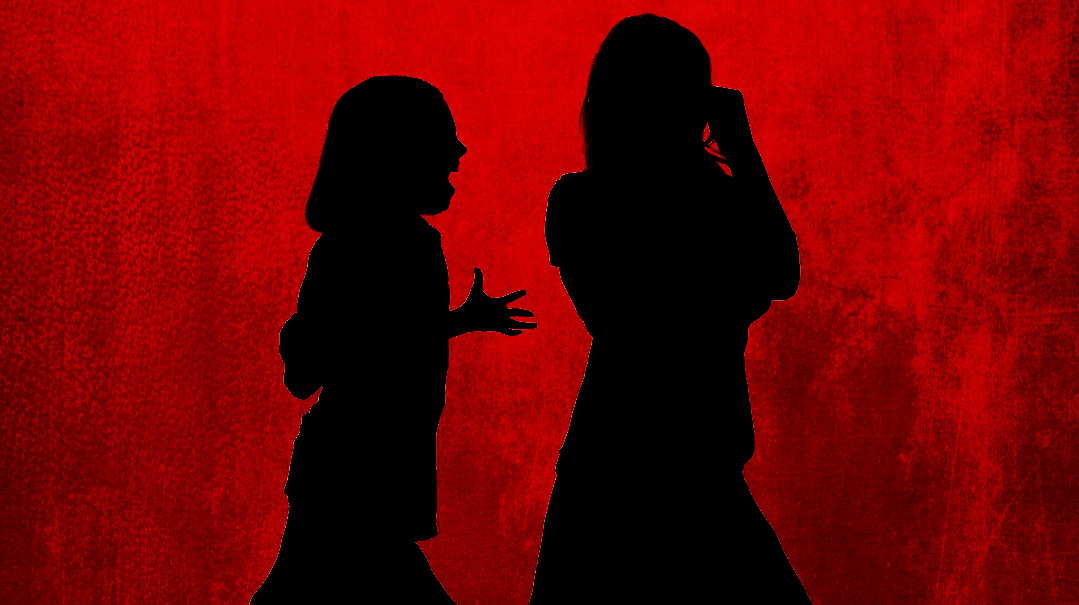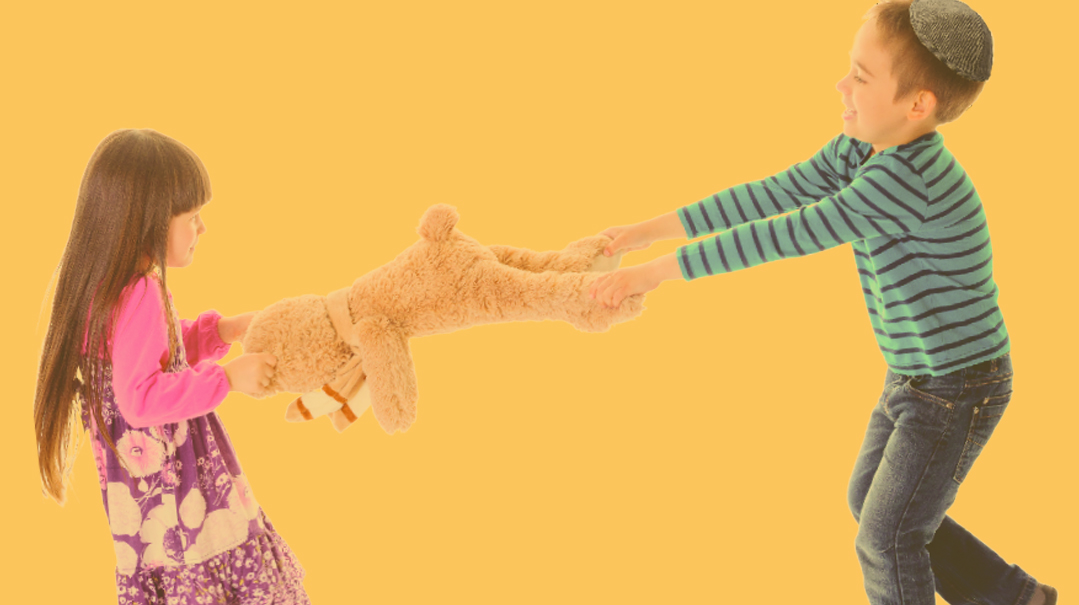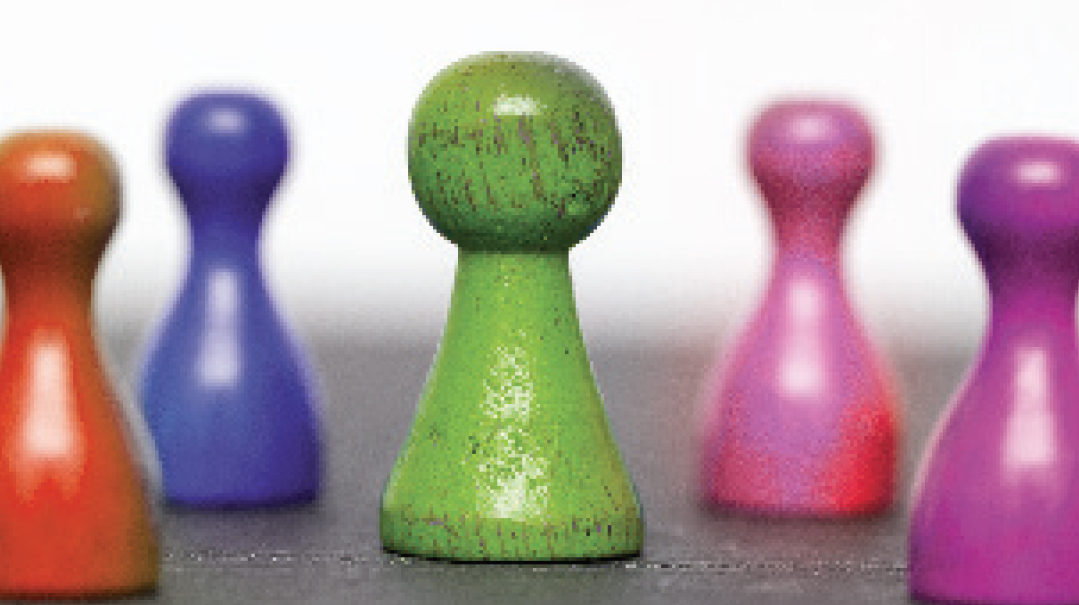Fear Ignited: Part II
| October 14, 2020How to move forward when yesterday’s trauma is haunting your today
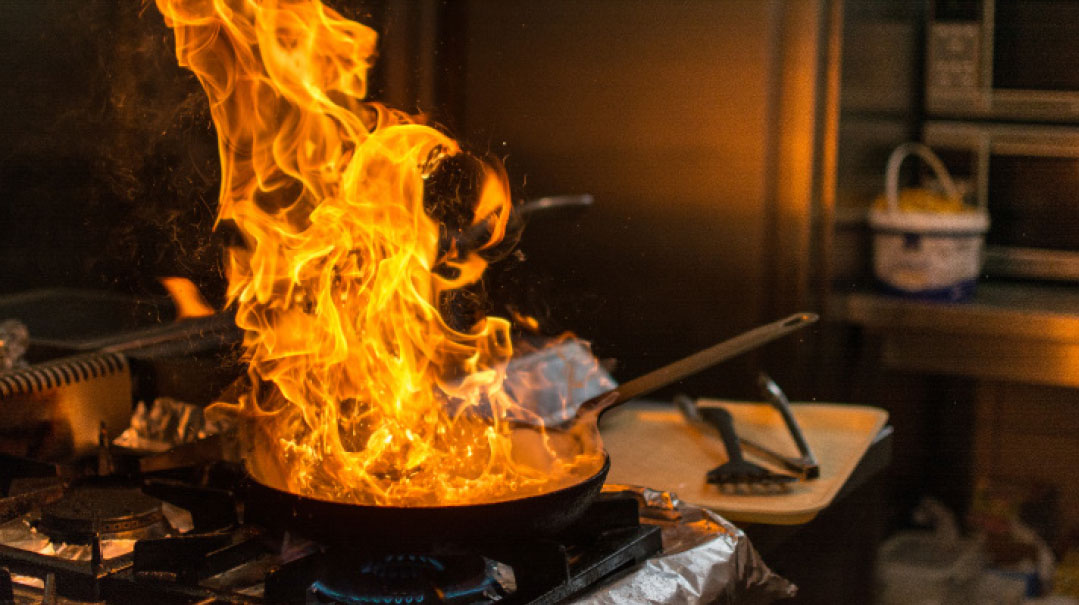
The Problem: Trauma causing anxiety and panic
Tool Used: EMDR
Previously: Rikki came for treatment for a single-incident trauma. She had a kitchen fire and afterward became crippled by panic and anxiety. In the first installment (Issue 696), Rikki learned about trauma and the brain, developed mindfulness practice, and learned panic-reducing strategies — such as developing an imaginary safe space and other resourcing techniques.
Rikki was running late for session when my phone pinged. “Traffic. Kids sick. Dog ate my homework. Sorry. B there in 10.”
I laughed as I reviewed Rikki’s file. I was looking forward to hearing if she’d had a less stressful week since I’d seen her. Rikki bounded through the door, her energy tangible.
“Hi! So sorry,” she said breathlessly, as she collapsed onto the couch. “Crazy day. Week.”
“It’s okay. Catch your breath, take some time to land.” I handed her a water bottle. “Want a mindful drink?”
Rikki accepted the water. “Yes! I actually love this mindful thing. I did the candy exercise that you taught me with my kids. We actually did it with raisins. I didn’t tell them I do it with candy. It was a fun, calm activity for about four minutes before chaos descended again.”
“It’s awesome that you’re teaching strategies you’re learning here to your kids.” I paused while I watched Rikki take a slow sip of water and then begin to examine the bottle. After about three minutes of mindful drinking she looked up, clearer and calmer than before.
“Great job. So, how was the week?”
“My panic wasn’t terrible. I’d say it improved with the things I learned. But I feel a bit stagnant now, like as long as I don’t do certain things that trigger those memories, I’m fine and generally managing well. But what happens when I try to cook with oil or something again? I’m scared I’ll be back to square one.”
“Yes, could be. You’ve said that you were really surprised by the intensity of the panic — both right after the fire and also the extreme anxiety you feel when you think about the incident. Do you feel up to looking at that today?”
“Yes! I just want to be panic-free — able to cook normally and not fear the stove.” Rikki nodded expectantly.
“Great. That’s a really clear goal, Rikki. As we discussed, we’re going to try to treat the cause, what we’ll call core belief, of the problem, not just the obvious symptoms.
Triggering Old Wounds
“There’s a saying, ‘If it’s hysterical, it’s historical.’ The premise is that if there’s a very strong reaction, it’s possible it’s coming from an older, unhealed place that’s been triggered. What do you think about that?”
“I guess it makes sense. But I don’t have any memories of anything like this happening.”
I nodded. “So here’s the thing: Our brain can make connections to different negative experiences, even if they’re not so obviously related. We may have been affected by an incident, but not have any concrete recollection of it happening, especially if it took place before we were two years old. Believe it or not, our bodies and brains can retain experiences even from gestation.”
“What?! That’s crazy! How?” Rikki exclaimed.
“Basically, everything we experience causes some sort of neurobiological encoding. Memories are made up of all of our senses. Sit tight for some more neuroscience.
“Here’s how our memories are formed: An experience occurs and our perceptions, attitudes, and behaviors form.”
Rikki was focusing intently, and I continued.
“Hebb’s Axiom states: ‘Neurons that fire together, wire together.’ So let’s say you eat a hot-fudge ice cream for the first time. It’s delicious and sweet. You’re sitting on your mother’s lap. There are so many positive neural associations firing at this point, that a hot-fudge sundae will probably always be a comforting, delicious food. Or, the opposite: Someone is in the middle of a tuna sandwich when she hears bad news. She throws up the tuna and experiences grief and sadness. It’s possible it would be difficult for that person to enjoy tuna for a while after that. You following?”
“Yes, totally. I’m like that with watermelon. I spent nine months simultaneously craving it and throwing it up during my last pregnancy, and now I can’t look at it.”
“Exactly. So we have these experiences and they get encoded in our brains. And then similar experiences occur and reactivate our previous learning, and the past and present experiences consolidate. Something called associative learning is at play here, especially for traumatic memory.”
“What does that mean?” Rikki leaned forward.
“Basically, humans are designed to heal naturally from emotional wounds, just like our bodies know how to heal from physical wounds. So we experience something, and then we either forget it or it turns into a memory, right?”
Rikki nodded.
“Memory gets ‘digested’ through talking, thinking, and dreaming, until the memory has been broken down — or incorporated — and becomes neutralized. However, if an experience is very overwhelming and shocking, the healing system may become blocked, and the disturbing information doesn’t get processed.”
“Where does it go?”
“It stays present with us, or ‘stuck’ in the limbic system. A traumatic memory can maintain its disturbing power for an indefinite period of time until it’s properly processed. Even when there’s a single-incident trauma, like in your case with the fire, it’s possible there was another experience that’s been triggered from your memory network. Then we have to access that memory and calm it down — consolidate the networks to the present.
“It’s possible that a bad experience that happened in your past has become your terrifying present. Or more succinctly: The past is present.”
Rikki’s face cleared. “Oh, so that would explain why I’m so crazy scared over something that doesn’t rationally make sense. So we try to find that first fear?”
“Yes, the core of the idea is that we don’t focus only on the symptom — your panic and anxiety — but actually on the cause.”
“I like that, because if you don’t get to the first bad memory, then something else can just set it off again. But I don’t really get how these memories get stuck, or even how they are created.”
“Great question. Remember our discussion a few sessions ago about how the brain works?”
“Yes, there’s the thinking part that is the cerebral cortex, and the emotional part — the limbic system. In the limbic system, there’s the amygdala, which has to do with fear and can make us respond to fear in flight, fight, or freeze. Am I a good student?” Rikki smiled cheekily.
I winked in return. “The best. It’s possible to have early, highly emotional memories that we can’t recall. Sometimes they present as feelings rather than memory, though. Usually we can find them stored in our bodies.”
“Okay, so please, just erase all of these memories that are making me irrational every time I step into the kitchen. Oops, gentleness and self-compassion…. I’ll rephrase: that are making me fearful and anxious.”
I laughed. “Good save! And reminder: Therapists aren’t magicians, Rikki.”
“I know. But how long is this going to take? You know I don’t have patience for therapy. No offense, Abby, but I just want it over with.”
“I understand. It’s hard to carve out time, space, and money to invest in the process, and you just want to feel like yourself again. Here’s some encouraging news: You have a single-incident trauma. You’re here because of your kitchen fire. It’s possible that there may be some hard experiences in your past that triggered a more emotional response, but it’s also possible that the experience of the fire was very overwhelming and blocked the cerebral processing.”
“What’s the encouraging news?” Rikki asked, one eyebrow arched.
Digesting Memories
“If we unstick this memory and help it get reorganized, then you won’t feel this fear. The unsticking may be this singular incident or we might discover a few memories that need untangling, but hopefully it will be pretty straightforward.”
“How do we do that?” Rikki asked. “You said you’re not a magician, and I assume you aren’t a brain surgeon either.”
“Nope,” I answered. “No clandestine operating table here. But there’s a really effective way to treat traumatic experiences called EMDR. It stands for eye movement desensitization and reprocessing. It’s a way to help the brain process unwanted scary or bad memories.”
“Oh, I’ve heard about that — it’s tapping or something right? Sounds very weird.”
“It’s usually eye movements, but it can be tapping or some other method of bilateral stimulation as well. There are a lot of different theories as to why and how it works. One theory is that the rapid-eye movements replicate the eye movement in REM sleep. When we sleep, our brains process what happened in the day, prune away stuff, keep other stuff. So if the eye movements are copying what happens when we’re in the deep phase of sleep, it naturally will process the bad memories too.”
“That’s why things always feel more distant after a good night’s sleep!”
“Yes! Another theory is that the eye movements overload the brain while the trauma memory is being accessed, which competes with our present memory making and decreases vividness of the past one. Our brains can only hold so much information before something needs to be dropped or organized differently. The eye movements — or whatever bilateral stimulation is being done — may serve as a distraction, which prevents a full-force trauma from taking over, and may make it more tolerable to stay with the upsetting memory. It’s a gentler type of reprocessing than exposure.
“Exposure and CBT is another effective form of trauma treatment. I could tell you to go home and think about cooking your fries, and then next time I’d ask you to take out the pot, and then maybe use it, and we’d build up until you can just go and make some sweet potato fries again. This works, but it doesn’t address an underlying, older traumatic memory. EMDR can unstick a lot of the more emotional memory, and then we could use exposure if necessary, but it wouldn’t feel nearly as scary at that point.”
“Ok. So, let’s do the EMDR. Can we start today?”
“Well, in fact, I’ve been preparing you for it for the past couple of sessions.” I smiled.
“What? How?”
“Before any trauma treatment, it’s important that you feel strong and safe before going to those memories, because they may be really troubling. That’s where all your mindfulness, safe space, and self-compassion work comes in.”
“That’s great! I definitely feel like I can calm myself better with that stuff I’ve been practicing. Can we start now then?” Rikki asked hopefully.
“Almost. I get that you’re eager to start, but it’s important to make sure that when we do this work it won’t be overwhelming. Like, imagine I just told you to go run a marathon today.”
“I’d tell you you’re crazy,” Rikki said with a smile.
“Right. Because you didn’t train for it, you’re not prepared for it today, and if you’re not ready, you could hurt yourself. Think of me as your personal trainer — I’m helping you train so when we start the work, it goes smoothly. And you’ve done some great training already. Just a few more exercises, okay?”
“Sure.”
“So, we’ve been working toward your goal of feeling safe in the kitchen and recovering from your kitchen fire. Can you tell me where you feel the most unsafe?”
“Next to the stove where the pot exploded into flames.”
“Okay. What would you like to feel and have happen in that place?”
“I’d like to be able to go to the stove and not have my heart race, and just be able to cook absentmindedly like I did before.”
“What would you need to feel safer in the kitchen?”
Rikki looked thoughtful. “Do you think it’s a good idea to set up a timer to remember the stuff on the stove?”
“That sounds like an excellent idea. Is there anything else you need to feel safer?”
“Maybe I’d ask my husband to be on the lookout too, if he’s around. Oh! I could say out loud — ‘There’s something on the stove.’ ”
“Rikki, I’m going to ask you to imagine watching a little video in your mind. In this video, you’re in your kitchen, and you’re cooking with oil on the stove. You set the timer and say out loud, ‘There’s a pot with oil on the stove.’ You chop some veggies, pour your toddler a drink, and finish frying your fries in the pot. You feel safe. You take out your fries — they’re crispy and delicious. Everyone gets called in for dinner, and you enjoy the meal.”
“In this magical video, can I pretend that my baby isn’t screaming and my toddler isn’t throwing food on the floor?”
“Well, I think it should be realistic,” I said, laughing, “so maybe just stop the video at the spot when you bring your delicious supper to the table. You can do this with your eyes open or closed, whatever will help you concentrate.
“Start at the beginning. You’ve just put up a pot of oil for your fries, keep going until the end when supper is served. Tell me when you’re done. Ready?”
Rikki nodded and I watched as she imagined the scene with her eyes closed. After about one minute, her eyes fluttered open. “Done.”
“Great. How did that feel?”
“I felt a bit panicked, honestly.” Rikki chewed the inside of her cheek.
“It still feels unsafe to you.”
“Yeah, I know nothing’s going to happen here — I mean I’m not even in my kitchen! But I still get scared.”
“Okay. How can you tell when you’re feeling scared? What words are in your head? What’s going on in your body?”
Rikki looked at me warily.
“Let me tell you some things other people notice in their bodies. You can tell me if this happens to you. Some people say their heart starts pounding, or they get sweaty or tense, or their stomach feels funny.”
“Yeah, so when I’m in the kitchen, I feel sick and weak, and tense, almost like I’m afraid to move. Just now, I felt my heart race and my stomach twist.”
“Right, but you know what to do, Rikki, you’ve practiced making yourself feel safe. You can control your body, get your body to give your mind a different message.”
“Right, that’s the safe space or deep breathing.”
“All right, so let’s go back to the time in the kitchen that you were the most scared. Get a picture in your mind. Notice what you’re seeing, what words are in your head, what you’re feeling, what’s going on in your body. Got it?”
Rikki nodded.
“Now I’m going to ask you how bad the feeling is, from zero to ten. Ten is the worst the feeling could be; zero is no bad feeling at all. How bad is the feeling right now?”
“When I think about the beginning part — being near the stove or the pot — I think it’s a six.”
“Okay. Let’s do a little deep breathing. Breathe in — one, two, three. Out — one, two, three.” We continuted breathing for a minute. “Good. Now, on zero to ten, where are you?”
“Right now? A three.” Rikki smiled.
“Great. Can we try to do that video visualization again? Do you feel up for it?”
“Yes, I can try.”
“Is there anything else you need in your visualization to make yourself feel safer?”
“Can I have a fire extinguisher nearby?”
“Absolutely. Good thinking. So start at the beginning of the video, there’s your fire extinguisher there, your timer, and you say out loud: ‘There’s a pot on the stove.’ Tell me when you’re done. Ready?”
Rikki closed her eyes. After a few minutes, her eyes fluttered open. “Done.”
“How was it?” I asked.
“It was fine. No panic. Still not nothing — but like a manageable two.”
“Way to go. You can practice that a few times more, here, or at home if you feel up to it. If you feel a little panic like before, just go to your self-soothing strategies. Or ask yourself what else you need in your visualization to feel safe.”
“Okay, I will. Can we start now?” Rikki asked with a lopsided grin.
“We have a little more time to do one final practice setup, and depending on how you’re feeling next session, we can hopefully start then.
“Let’s practice some eye movements.”
Rikki nodded.
“Can you think of a positive image? Something that makes you feel good? Nothing complex, just a simple image.”
“Simple? That would be drinking my morning coffee. I’m on my porch, and it’s quiet and sunny.”
“Perfect. I’m going to bring my chair a little closer to you, but a little off to the side — like two ships passing each other. This way, when you’re concentrating ahead, you’re not staring at my face.”
Rikki smiled. I made an L-shape with my arm and started waving two fingers together, across Rikki’s visual field.
“How’s the distance? Is my hand too close, too far, or just right?”
“It’s good.”
“How is the speed? Too fast, too slow, or just right?”
“It’s okay.”
“All right, let me know if there need to be any adjustments. Now, I want you to concentrate on drinking your coffee while you follow my fingers with your eyes. Ready?”
Rikki nodded, and followed my fingers with her eyes for several seconds.
“How did that go? Were you able to concentrate on drinking your coffee in the sun?”
“Yes, but it was a bit weird. Like I got distracted. The distance and speed were fine. It’s just new, I guess.”
“Sure. We’re going to do it again. Get your image, coffee in the sun… ready?” I did another set of eye movements with Rikki.
“Better, worse, or the same?”
“Better. I was able to concentrate more. Felt nice, actually.”
“Great job, Rikki. Let’s review all the hard work you’ve put into your training so far: You learned both how we experience trauma and how memory is created, you created a safe space for yourself — that deserted island with crystal blue waters and white sandy beaches — you learned how to do mindfulness and deep breathing to help calm yourself down, you created a new neural network, rehearsed coping strategies and visualized a good ending, and you practiced eye movements.”
“Oh, wow! When you put it like that, I’m like the most prepared person on planet earth.”
I laughed. “Glad you feel like that, Rikki. Until we see each other again, please continue to practice your safe space, deep breathing, and mindfulness. Would it be possible to schedule a longer session for next time?”
“Yes, but why?”
“Because the time flies by and once we’re doing the work, your neuro networks are activated and plastic — that means ready for change — so we want to capitalize on that window of time. I’m putting you in for 90 minutes.”
“Great, see you next week. I’m looking forward.”
To be continued…
EMDR in Brief
EMDR was developed in 1987. While it was initially more controversial, the research supports EMDR’s use a leading form of trauma treatment. Research continues to show that trauma is a potential source of most types of emotional or behavioral problems.
EMDR can’t necessarily be used as a stand-alone treatment for every issue, but it can be very helpful in resolving any client’s traumatic memories. It isn’t a replacement for other effective interventions — those are used in addition as part of a holistic treatment plan.
You have to know when to use EMDR, and how to get the client to that point. Many steps need to be taken, and if EMDR is attempted without a trained professional, it’s possible that it could do more harm than good as the client may become flooded, or too emotionally overwhelmed, and the issue wouldn’t be resolved. Effective use of EMDR requires a set of complex clinical skills.
Note: Some material in this article is taken from “EMDR: Within a Phase Model of Trauma-Informed Treatment” (Greenwald, 2007), written by my EMDR trainer, Dr. Ricky Greenwald. Many thanks to Dr. Greenwald for allowing the use of his materials and for reviewing this installment of Therapy Toolbox.
Abby Delouya maintains a private therapy practice for individuals and couples in Montreal, Canada.
(Originally featured in Family First, Issue 713)
Oops! We could not locate your form.





